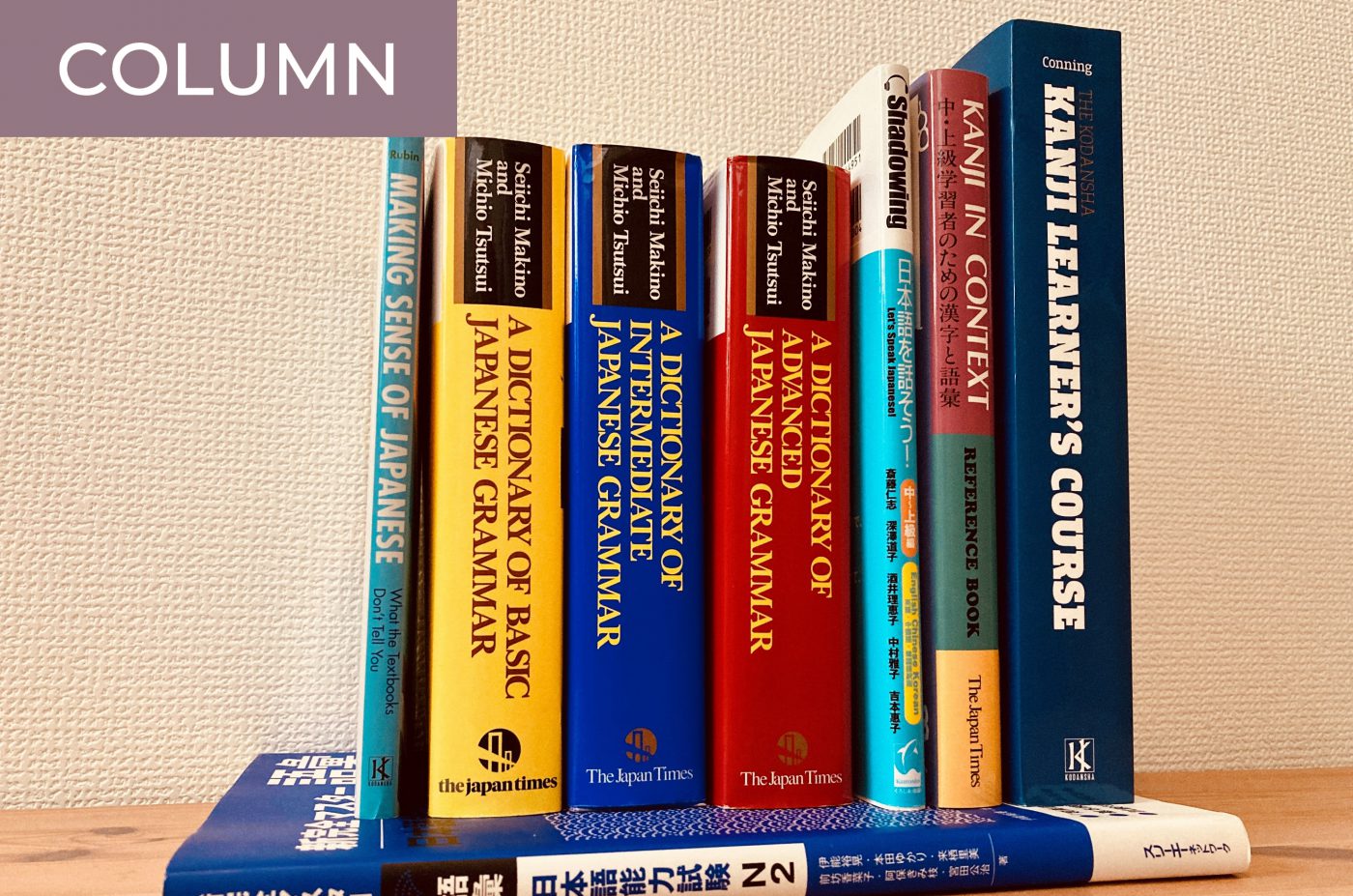Never underestimate the value of an excellent book. It may be possible to study Japanese entirely with online resources, however this approach overlooks a major benefit of a well-written book: curation. To craft, publish, and print a quality physical book involves an incredible amount of care and effort before it reaches your hands. Well-curated books are filled with essential content that would take you countless hours just to gather on your own via the internet.
This is why, despite my obsession with digital Japanese learning resources, there are a few printed materials that I can’t live without. When it comes to mastering Japanese, the following books, originally published before the dominance of digital learning materials, are essential.
Shin Kanzen Master (Series)
The merits of passing the Japanese Language Proficiency Test (JLPT) vary depending on who you ask. However, few doubt that studying the content of this exam, especially as a beginner, serves as a great compass to guide your language-learning journey. And when it comes to mastering JLPT content, few resources can surpass the quality of the Shin Kanzen Master books. This series is divided by JLPT levels (N4 to N1), and each level contains individual books for each functional section of the test (kanji, vocabulary, grammar, reading, and listening). These books are incredibly thorough and contain example sentences and exercises of the utmost quality. I find the content of these books to be harder than the actual JLPT exams, so “mastering” the Kanzen Master series is a surefire way to earn that coveted “pass” certificate or simply level up your overall Japanese ability.
A Dictionary of Basic/Intermediate/Advanced Japanese Grammar (Series)
Like the Kanzen Master series, this hallowed collection of grammar books is renowned for its depth, scope, and quality. There are three books in total: beginner, intermediate, and advanced. One key way that these books differ from the Kanzen Master books is that they feature English explanations for all skill levels. While learning kanji and vocabulary words without English explanations can be beneficial for intermediate and advanced learners, the nuance of grammar is more complicated, and English explanations are helpful. Since these books are strictly dictionaries, without exercises, using them with other textbooks and resources is a winning strategy. On a side note, unlike the other books in this article, these dictionaries are now available in Amazon Kindle format.
Kanji in Context
As you can guess from the title, this three-book collection is all about learning Japanese kanji characters through practical context: commonly used vocabulary and sentences. Like the previous resources, this book is unrivaled in its quality and completeness. The example sentences contained within the workbooks are relevant and natural—a far cry from the dubious, crowd-sourced example sentences one has to sift through on the web. Be warned, however. To get the most out of this series, you have to buy the entire set of three books. The main reference book is basically a high-quality kanji dictionary. The meat of the study materials, example sentences and exercises, is in the two companion workbooks .

Merging the Physical and Digital Worlds
Besides the Kindle versions of the grammar dictionaries, none of the above resources have online components or apps. However, I recommend manually exporting the content of these books into your own digital study system. As you peruse these books, make custom digital flashcard decks to review what you’ve learned and beat back the forgetting curve. Ultimately, a successful study strategy is all about merging the best features of curated books with the interactivity and flexibility of digital resources.






2 Comments
Arthur Piper
June 22, 2021 at 1:14 AMNice review. Just a note that the Dictionary of Basic Japanese Grammar has an associated workbook: Multimedia Exercises for Basic Japanese Grammar. It comes with a free download of powerpoint slides for each grammar point in the form of key questions and spoken and written answers. It’s extremely useful.
Anthony Griffin
June 22, 2021 at 5:18 PMHello Arthur,
Thanks for reading my article and for your feedback. I wasn’t aware of the associated workbook, and I appreciate that you took the time to introduce it. So far, it looks great, and I’m looking forward to going through the slides. Let’s hope that the release something similar for the Intermediate and Advanced levels–quality grammar workbooks are hard to come by.